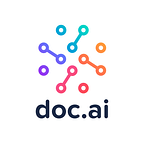by Sam De Brouwer, Co-Founder and COO, doc.ai
A selfie that predicts your biometrics and a number of health risks.
From day one of doc.ai’s existence, we’ve leveraged the fact that our faces contain unexploited health cues that are hard to see with the naked eye, but not for a neural network. Back in 2016 we started to develop our first artificial intelligence models to help decode and understand these health cues by simply taking a picture of yourself, using a selfie. Today when you use the doc.ai app, you can use this feature to collect your phenome. The phenome is the collection of your biometric data such as your weight, your height, your age, sex and BMI.
Back then, we ran our first data set of 1.2 million faces through a deep learning model, consisting of half men and half women. Although the model was not 100% accurate, it was in constant training, and was fun to use.
We now have a new improved model that will be pushed in our app this Fall.
Why will our new model be better, and what is edge computing?
Our new model will be better because we have collected more data, and have trained more comprehensive neural networks. Also, our models compute on the edge. So naturally, the next question is what is edge computing?
Today, most computing is centralized, and takes place in the cloud. The centralized computations are most likely performed on machines run by a few giant cloud suppliers like Amazon, Microsoft, Google, and IBM.
Simply put, edge computing is when all the computing is done on your device, or more specifically, on your phone instead of the cloud.
Today when you use the doc.ai app to collect your phenome information by taking your selfie, it takes between 20 and 30 seconds. With our new model, computing on the edge, it only takes a few milliseconds. This reduces the latency, and doesn’t require an internet connection. You can see in my demo above how the neural network is computing the information in real time. We’ re also developing a model that captures data from your environment. It is collecting and learning from your environment. The next step will be the training of these models on the device.
Decentralizing the machine intelligence
The idea of decentralizing machine intelligence and moving it into the hands of consumers, is a big effort at doc.ai.
This concept of building a decentralized computing as well as a learning ecosystem has been on our minds since the inception of the company. This was already explained in our brochure and white paper back in 2017.
This is how we come to realize our company’s vision of allowing every user to own their data and use it to train the neural network based artificial intelligence model without giving away the data.
The doc.ai app is available on the app store, with the selfie that collects your biometric information. It already enables to collect 8 omics as well as joining the first AI powered data trial on the blockchain “Can AI predict your risks for allergies?”
Our new model, computing on the edge that is shown in the second video, will be released in September in the app store, and will be open for developers to build on. Stay tuned!
